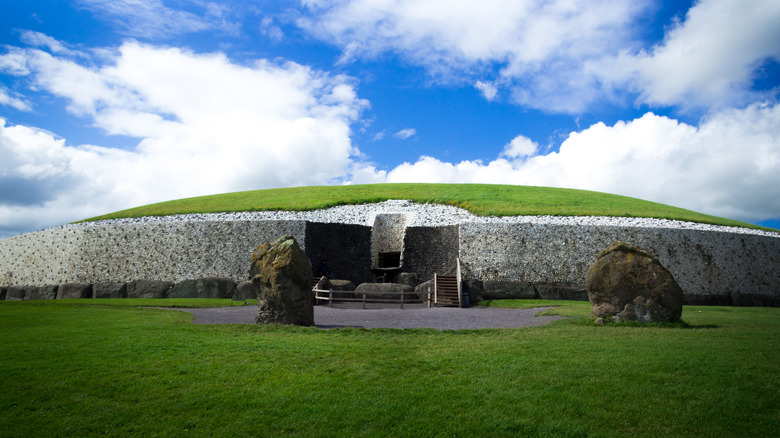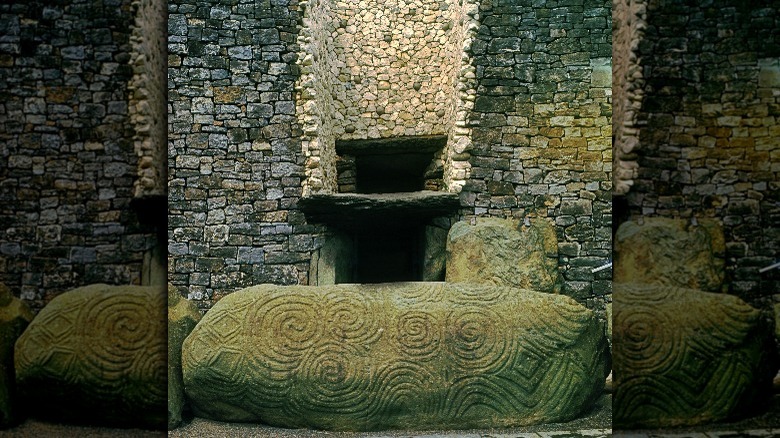This Ireland Monument Is Older Than The Egyptian Pyramids
No one tends to think of Ireland when they hear the term "ancient civilization." Instead, the island nation is celebrated for a multitude of other reasons, from their impressive number of Nobel Prize laureates to their famous hospitality and infectious friendliness. But the fact is, the history of the Emerald Isle goes back far further than many of us realize — as one unassuming site just a few miles north of Dublin testifies.
In Ireland's historic County Meath lies an ancient monument known as Newgrange. From a distance, it looks like a small hill, but is in fact a "passage tomb" — an artfully crafted resting place constructed by Stone Age farmers, according to the Newgrange website, decorated with stunning Neolithic stone carvings. The structure is not as well known as the Pyramids of Giza in Egypt or England's Stonehenge, but Newgrange outdates them both by an impressive margin; per the same source, the tomb was created around 3,200 B.C., some 5,200 years ago.
The secrets of Newgrange
Per the Newgrange website, generations of archaeologists have been working to uncover the secrets of the passage tomb: the methods of construction, how and why it came to be positioned, and why its creators chose the distinctive "kidney-shaped" design. According to National Geographic, one such mystery was finally unraveled in the 1960s, when experts uncovered the meaning of the tomb's "roof-box," a "baffling orifice" found above the entrance to the tomb's central passage.
Professor Michael J. O'Kelly was the archaeologist in charge of excavation and restoration at Newgrange between 1962 and 1975, according to the Newgrange website, and it was in 1967 that he made a startling discovery: the roof-box had been specially positioned to light up the tomb passage leading to the site's ancestral remains on the shortest day of the year, winter solstice. His discovery was a reminder of the incredible ingenuity of Stone Age engineering, and of the hidden secrets that can still come to light millennia after such seemingly humble structures were built.
In 1993, Newgrange was declared a UNESCO World Heritage Site and continues to attract tourists from around the world.

